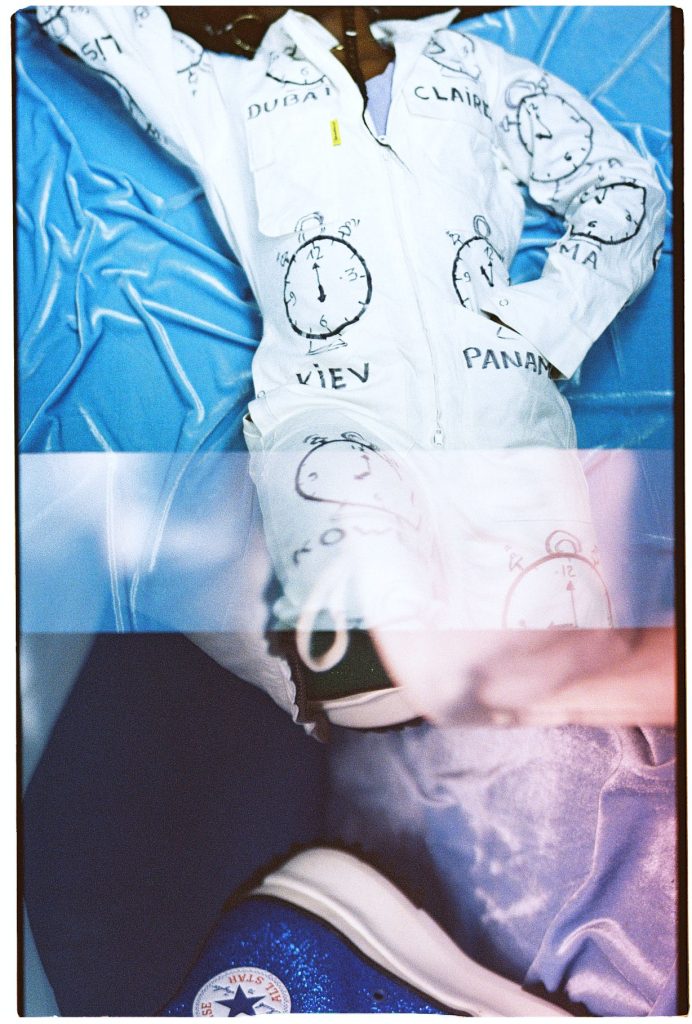Claire M. WILKINSON - WEBER
Fashioning Bollywood - the making and meaning of hindi film costume
Costume is intrinsic to a character’s transformation, within a film: young carefree unmarried heroine (risque outfits) into a demure marriageable woman wrapped in a sari.
The paradox of clothing is personal and social
Talk with designer Meena: factors in order to make costumes rich family/poor family/ young girl going to college/
Women never did adopt western styles on a major style - now the vast majority of women spend their adult lives dressed exclusively in garments that are unambiguously coded as Indian - while Indian men were ambivalently invited to participate in the sartorial system of the british, Indian women were categorically distinguished from European women, sharing neither their clothes nor public etiquette.
20th: change in western women’s clothing marked by shortened dress, skirt hem, shorter sleeves, version of male dress with shirt and pants —> inappropriate for most Indian women. Among middle and upper classs a woman’s legs are hidden and scarves of various kinds or a sari pallu (lngth of the sari that is draped over the shoulder). Cover the chest or the head.
Easy opposition of Indian/western misses critical point that indian costumes may themselves be ambiguous markers of proper indian womanhood.
The sari, the otherwise thoroughly respectable dress of the adult, married woman, is as readily associated with emotion and intimacy as it is with status and power; its erotical potential emerges from its essential character as a sinuous wrapping of the body that continuously hints at unwrapping (DWYER 2000)
Another exemple: the drenching of the sari earring heroine one a rain shower, imprinting the body’s surface features into the clinging folds and making the body emerge into the cloth ex: Satyam, Shivam, Sundaram (1978 Raj Kapoor)
DWYER 2000 points out that indian audiences across class and gender boundaries understand the cultural link between rain/fertility that wet-sari scenes evoke.
The sari’s symbolic and material qualities are known so well by audiences, filmmakers are able to construct out of them multiples layers of meaning and feeling
The reluctance until recently to clothe unruly or sexually assertive female characters in saris could be attributed to the sari’s status as an exemplary garment, a recognition
Exemple: Silsila film about a love triangle
Donna Mathew
India’s Rape Culture: An Analysis of Women’s Portrayal in Bollywood Films
W. DER HERDE
Bollywood babylon - Interviews with Shyam Benegal (major film director)
Information: 1971: becoming largest film industry overtaking Japan - 50’s golden age of Indian cinema
Shyam Benegal - distinctive style for his ideology + empowerment of women important underlying theme in most of his films
MUKULIKA BANERJEE
The Sari
The sari a lived garment - expression of style but also ideals about what a woman should be - incorporating patriarchal perspective on women’s responsibility and duties
—> a tool to change the diktat by adopting new style of sari
Presentation of the sari used through private moment -
Micro perspectives through ethnolographic field work with Indian women + macro perspectives with social change
Most indian omen have the first encounter with the sari at a very young age when they get to be breastefeeded by their women —> used as multi nursing tool
« The sari is like a fellow actor, constantly on stage, whose presence must always be remembered »
Traditionnel girls wore sari for the first time when being presented as potential brides during marriage negotiations
—> connotation of marriage and sexuality
For indian men, this is an abiding image of the sari with a particular shape and color: color is blue, that shifts and shimmers from electric to translucent to ultramarine as the sheer chiffon catches the light + shape of perfect breast —> actress Sidevi Mr India / Chandni
The critical sequence consists of the actress slowly climbing a spiral staircase, filmed from an angle which seems to show the breast coming up the stairs, with the rest of the body merely following in its wake. Sridevi achieved this iconic status because she managed to perfectly express the potential od the sari to cover, caress and outline the body. The sari’s drape draws attention to the acceptable erotic zones of the breasts, waist and hips.
